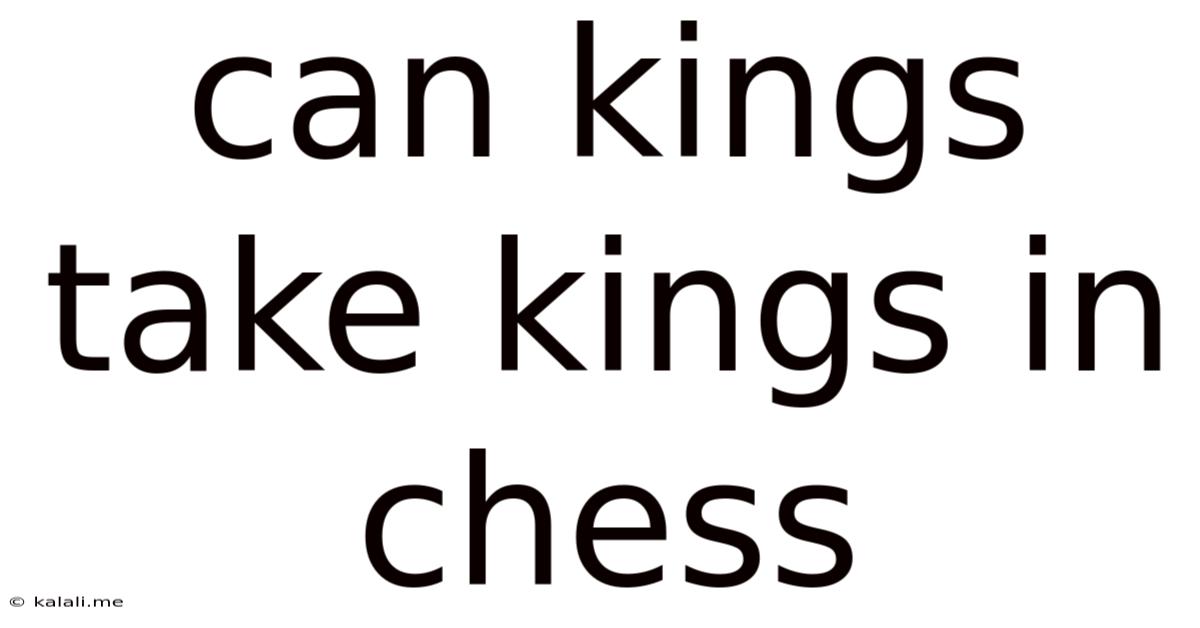Can Kings Take Kings In Chess
Kalali
Jun 11, 2025 · 3 min read

Table of Contents
Can Kings Take Kings in Chess? A Comprehensive Guide
Meta Description: Learn the crucial rules surrounding king capture in chess. This guide explains when and how kings can (and can't) be taken, clarifying a fundamental aspect of the game.
In chess, the king is the most important piece. Its safety is paramount, and the game ends when it's checkmated. But can one king actually capture another? The short answer is: yes, but not directly in the way other pieces capture. This article will delve into the nuances of how kings interact and how a king's "capture" ultimately signifies the end of the game.
Understanding Check and Checkmate
Before we discuss king-on-king action, let's clarify the concepts of check and checkmate.
-
Check: When a king is under attack (meaning an opponent's piece can move to the square occupied by the king on their next turn), it's said to be "in check." The attacking piece could be a pawn, rook, knight, bishop, or queen.
-
Checkmate: Checkmate occurs when a king is in check and there is no legal move to remove it from attack. This is the end of the game, resulting in a victory for the player who checkmated their opponent's king.
How Kings "Capture" Kings
A king can't directly "capture" another king in the same way a queen captures a pawn. There's no scenario where a king moves onto a square occupied by the opposing king and removes it from the board. The king's movement is restricted to one square in any direction.
Instead, the "capture" of a king is represented by checkmate. The checkmating player forces the opposing king into a position where it cannot escape capture, effectively ending the game. The checkmating piece isn't necessarily the king itself; it's usually achieved through a coordinated attack using multiple pieces. The final checkmate move frequently involves a queen, rook, or other powerful piece delivering the decisive blow, forcing the opposing king into a position where no escape is possible.
Strategic Implications
Understanding the implications of king safety is crucial to mastering chess. While a king can't directly capture the opposing king, the entire game revolves around protecting your own king and creating opportunities to checkmate your opponent's. This involves:
- King safety: Early in the game, prioritizing the safety of your king by keeping it protected by pawns and other pieces.
- Strategic positioning: Placing pieces strategically to control key squares and limit the opponent's options for attacking your king.
- Developing pieces: Bringing your pieces out to create a strong and coordinated attack.
- Endgame technique: Mastering endgame strategies is critical for effectively checkmating the opponent's king in the final stages of the game, often involving a king vs. king scenario with minor pieces.
In conclusion, while a king cannot directly capture another king by occupying the same square, the "capture" of the king, signified by checkmate, is the ultimate goal of the game. Understanding the nuances of check, checkmate, and king safety is paramount for success in chess. Focusing on strategic positioning and coordinated attacks is key to achieving checkmate and winning the game.
Latest Posts
Latest Posts
-
How Many Ears Of Corn To A Bushel
Jul 01, 2025
-
How Many Months Are In A Quarter
Jul 01, 2025
-
How Much Does A 12 Pack Of Pop Weigh
Jul 01, 2025
-
How Many Shots In A Half Gallon
Jul 01, 2025
-
Someone Once Told Me The World Was Macaroni
Jul 01, 2025
Related Post
Thank you for visiting our website which covers about Can Kings Take Kings In Chess . We hope the information provided has been useful to you. Feel free to contact us if you have any questions or need further assistance. See you next time and don't miss to bookmark.